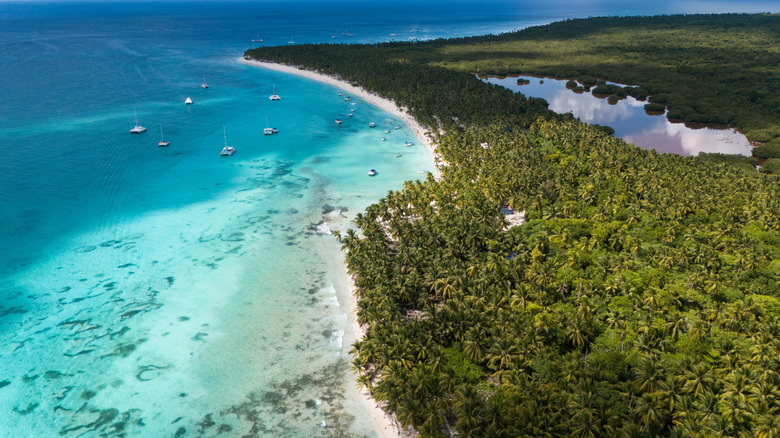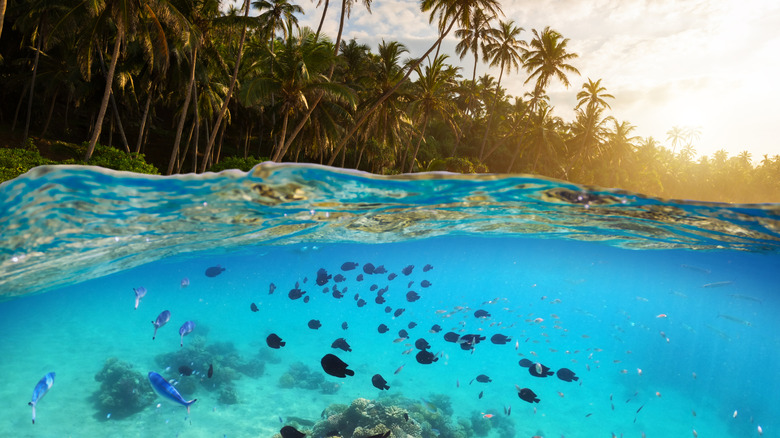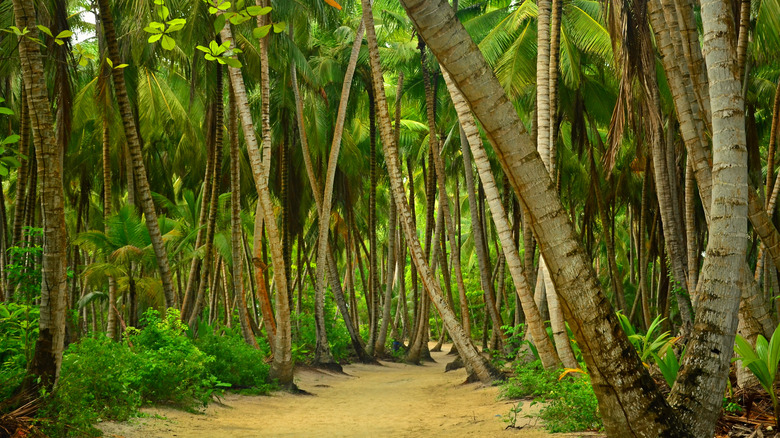Experience Caribbean Bliss Without Crowds At A Secret Tourist-Friendly White Sand Island
Located a short catamaran stretch off the eastern coast of the Dominican Republic, the quiet outcrop of Saona Island is quintessentially Caribbean. Its stretching ivory beaches, towering palms, and turquoise waters could be plucked straight from the cover of an island tourism brochure. Devoid of the mega-resorts and all-inclusive sprawls scattered across the mainland, fewer tourists flock to Saona's pristine shores. All 42 square miles of the peaceful isle are incorporated into the Cotubanamá National Park, a reserve of thick semi-humid forests, terraces of coral reef, and subterranean caverns teeming with marine life. While there are several idyllic beaches, easy to pick as some of the best in the Dominican Republic, within close proximity of Punta Cana, Saona's seclusion, powder shores, and thick forests still make it a standout.
The remote outcrop is solely accessible over the sea, with speedboats and catamarans carrying travelers daily from Bayahibe, close to the popular Punta Cana. While there is one public ferry leaving from the dock at 9 a.m., the vast majority of visitors organize their transfer with a tour agency on via their accommodation on the island. It takes around 45-50 minutes from Bayahibe, which is 50 mins down the shoreline from Punta Cana. Accessing the resort town is very easy from the U.S., given the popularity of its myriad resorts, with direct routes connecting Punta Cana to more than 20 U.S. cities. While flights run year round, the ideal season to visit Saona Island is between January and April, when the heat is not quite so intense and the rains are significantly more sporadic.
Enter the underwater world off the shores of Saona Island, Dominican Republic
Hailed as one of the best snorkeling spots in the Dominican Republic, the neon sprawl of the Cotubanamá National Park's protected coral houses more than 120 species of fish. Scan the seabed for crimson starfish, watch striped angelfish flit amid the coral, and, if you're lucky, make way for the bottlenose dolphins that occasionally dance over the Saona waves. Several companies offer half or full day snorkeling tours, providing all the necessary equipment, on-board seafood feasts, and convenient transport from the shore. Ensure you pick a tour that suits your travel style –- they range from more raucous options that include an open onboard bar to private excursions built to maximise your time underwater.
Scuba divers can also delve deeper into the caverns and coral shoals of the national park, swimming amid shoals of circling nurse sharks and green moray eels. Longer tours also encompass the wreck sites that sit off the shore of the main island, some buried beneath the waves for over a centuryI h. The most popular open water dives don't plunge any deeper than around 50 feet and don't require advanced certificates to partake in.
Created by the offshore Palmilla Sandbank there's a natural swimming pool that has formed in the middle of the turquoise Caribbean Sea. Wade out into waist deep water far from the shore, ensuring you don't step on any of the starfish plastered to the sandy floor.
Explore palm forests or soak on the pristine sands of Saona Island
Laden in dense forest, low-hanging mangroves, and coastal lagoons, Saona Island's verdant interior gives a glimpse into the diverse Cotubanamá National Park. More than 112 avian species fly over the 539 varieties of flora encompassed within the tropical reserve, attracting keen-eyed nature lovers to the birdwatching hiking route inhabited by red footed boobies and pterodactyl-winged magnificent frigatebirds. Even if you don't want to venture too far into the soaring palm forests, bright green Hispaniolan parrots can still be spotted from the white sand shores. You can spot them overseeing sunbathers on the sands of the most popular beaches — Canto de la Playa, Playa Bonita, and Playa del Gato.
If you prefer a more rustic experience than what is on offer in the coastal Dominican Republic cities full of affordable all-inclusive resorts, consider spending a night on the island. While there may not be a plethora of action-packed activities to keep you entertained, travelers enraptured by sands and sea won't run out of options. There are small ecolodges and basic hotels located close to the colorful villages of Mano Juan and Catuano, ideally suited for travelers seeking a reclusive island retreat. It's worth exploring the thatched homes of the island settlements while you're there -– largely subsiding off fishing, the off-track location offers local restaurants dishing up seafood plucked fresh from the shores that day.


